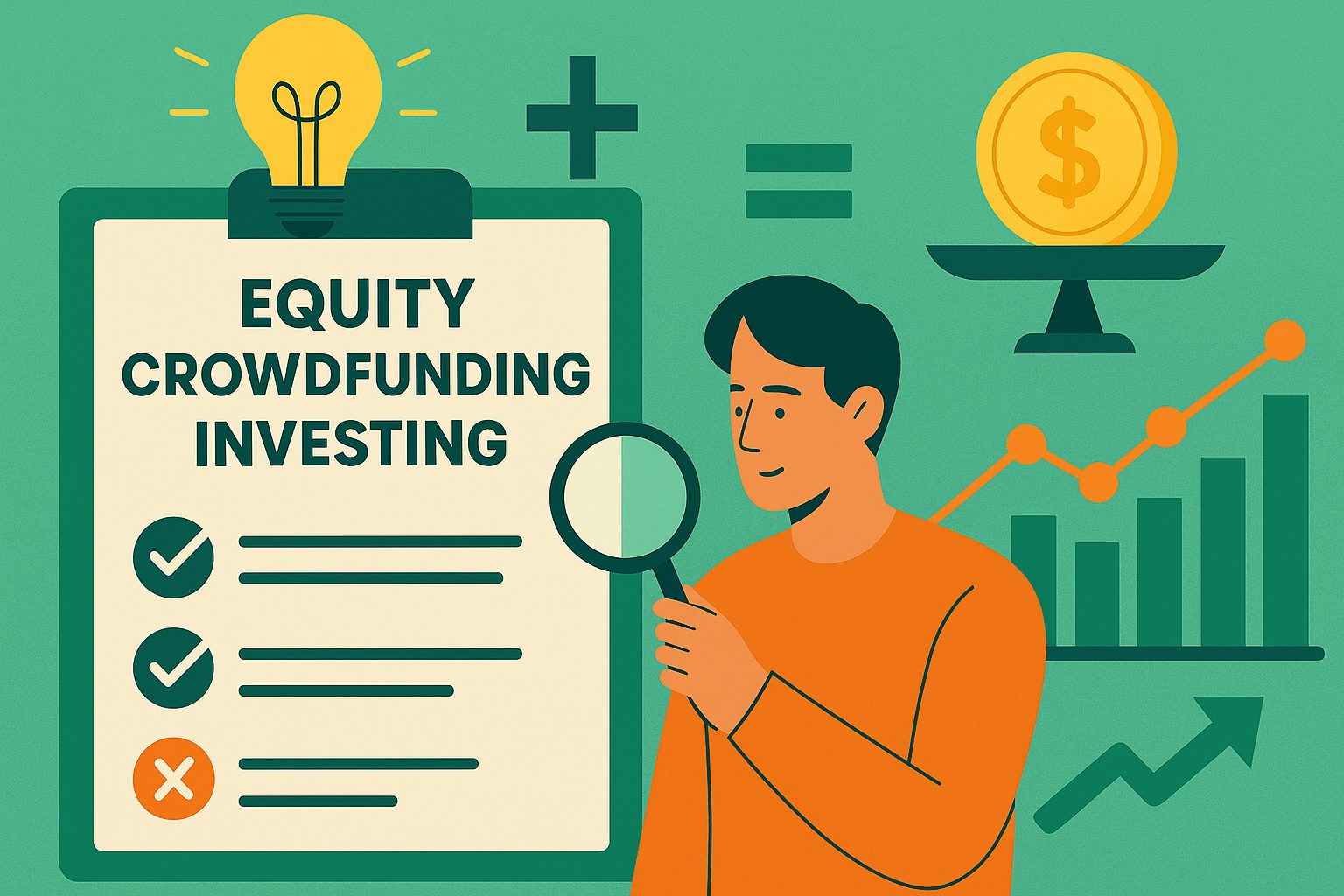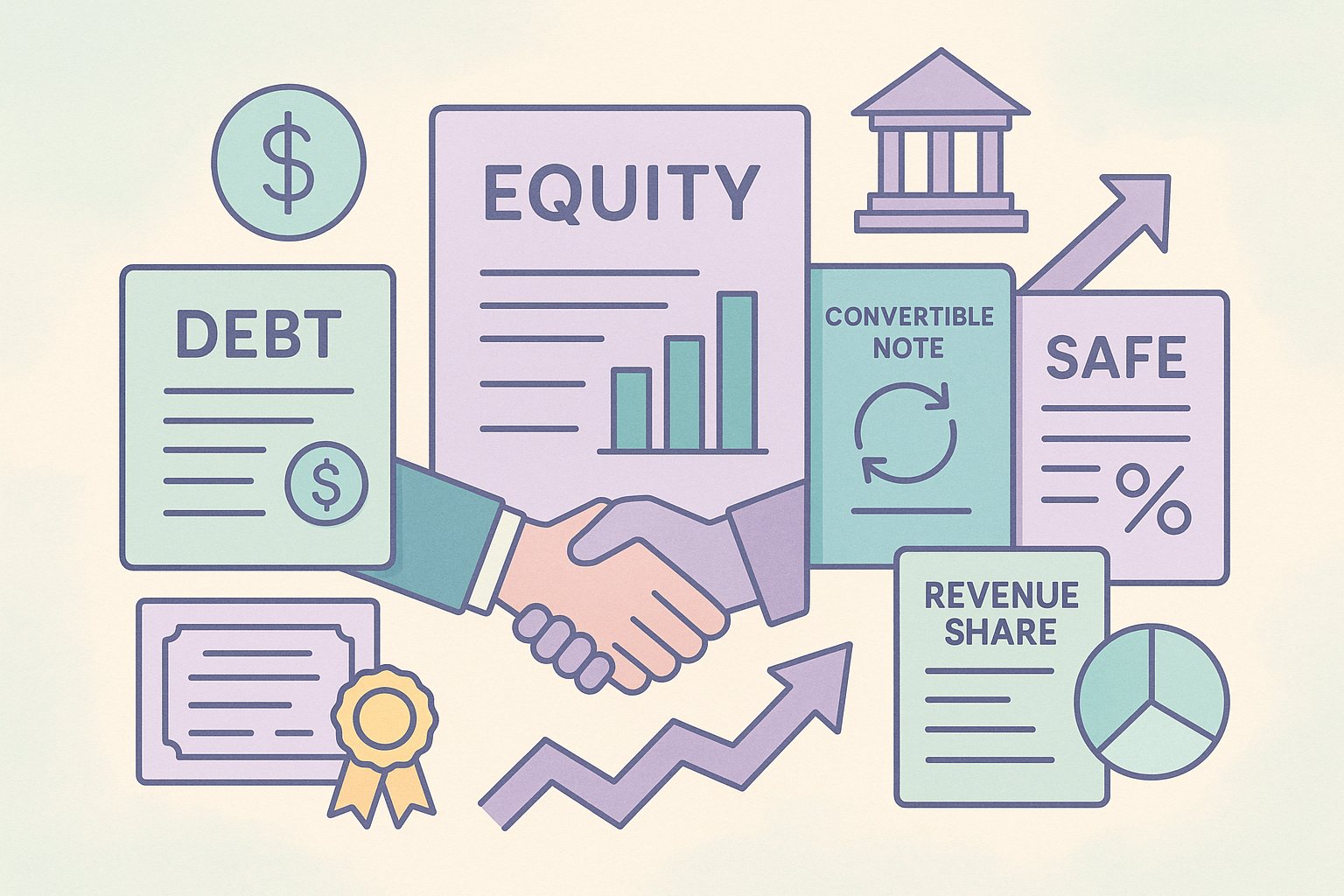Navigating the New Frontier of Equity Crowdfunding Investing
Equity crowdfunding has ushered in a transformative era for investors. No longer confined by accreditation barriers, individuals worldwide can now participate directly in early-stage ventures once accessible only to venture capitalists and angel syndicates. By pooling capital through specialized online platforms, everyday investors gain opportunities to acquire equity stakes in promising startups across technology, healthcare, consumer products, and more. This paradigm shift not only democratizes access to potentially high-growth investments but also fosters deeper connections between founders and their supporter communities. In this comprehensive deep dive, we’ll explore every facet of equity crowdfunding investing—from platform mechanics and rigorous due diligence to risk management techniques and evolving exit pathways—arming you with the knowledge to make strategic, confident investment decisions.
Tracing the Evolution and Regulatory Milestones
The modern equity crowdfunding landscape is rooted in critical regulatory changes enacted in the early 2010s. In 2012, the United States passed the JOBS Act, ushering in Regulation Crowdfunding (Reg CF) under the jurisdiction of the U.S. Securities and Exchange Commission (SEC). This groundbreaking framework permitted non-accredited investors to contribute to fundraising campaigns, with annual caps determined by income and net worth. Simultaneously, other jurisdictions—such as the United Kingdom with its Financial Conduct Authority guidelines and the European Union’s Prospectus Regulation—established analogous pathways. Over the past decade, platforms like SeedInvest, Republic, Crowdcube, and Wefunder have collectively facilitated billions of dollars in funding, propelling startups from concept to commercialization. As regulatory environments continue to adapt, investors benefit from increasing transparency, standardized disclosures, and emerging secondary trading environments—pivotal developments that redefine liquidity and investor protections.
Unveiling the Investor’s Edge: Beyond Traditional Markets
Equity crowdfunding presents several compelling advantages compared to conventional asset classes. First, early-stage startups exhibit the potential for exponential growth, meaning even modest initial investments—often starting at $100—can translate into significant returns upon successful exits. Crowdfunding also enables enhanced portfolio diversification by allowing investors to spread modest allocations across a variety of sectors and geographic markets. Moreover, this model offers the intangible reward of contributing directly to innovative solutions and emerging technologies. Whether you’re passionate about clean energy, biotech breakthroughs, or consumer lifestyle brands, equity crowdfunding aligns your capital with personal values and interests. Importantly, campaign platforms frequently foster vibrant online communities, granting investors insider access to product development milestones, founder Q&A sessions, and collaborative feedback forums that enrich both the investment and engagement experience.
Choosing Your Investment Platform: A Comparative Guide
Selecting the right equities crowdfunding platform is paramount. Criteria range from due diligence rigor and fee structures to user interface quality and community engagement features. For example, SeedInvest distinguishes itself with stringent vetting processes—requiring startups to demonstrate robust traction and complete financial audits—while Republic adopts a community-driven ethos, curating campaigns that resonate with mission-driven investors. Fee models vary: some platforms charge investors carry-based fees on successful exits, whereas others implement upfront subscription or maintenance fees. Accessibility and investor protections also differ; certain platforms impose minimum investment thresholds or stricter accreditation requirements for higher-risk offerings. By evaluating historical campaign success rates, average raise sizes, investor satisfaction ratings, and platform transparency, you can pinpoint the venue that best aligns with your risk tolerance and sector interests.
Mastering Due Diligence: The Critical Roadmap
Equity crowdfunding inherently involves startup risk, making comprehensive due diligence the bedrock of savvy investing. Start by assessing the founding team: examine their professional backgrounds, track records in previous ventures, domain expertise, and cohesion as a leadership unit. A team that combines technical prowess with business acumen and proven execution history often heralds a more resilient enterprise. Next, dissect the addressable market: analyze total market size, projected growth rates, and competitive dynamics. A startup targeting a multi-billion-dollar industry with favorable tailwinds and high barriers to entry typically exhibits stronger upside potential. Delve into financials—scrutinize revenue models, unit economics, burn rates, and cash runway projections—to ensure realistic valuations. Legal disclosures around intellectual property, regulatory approvals, and existing liabilities also warrant meticulous review. Finally, gauge authentic traction indicators—pre-sales figures, strategic partnerships, or pilot deployments—that validate product-market fit. A disciplined due diligence checklist not only highlights red flags but also reveals hidden gems poised for breakout success.
Demystifying Valuation Mechanisms and Equity Instruments
Equity crowdfunding campaigns employ a variety of instruments—each with distinct implications for investors. Pre-money valuation campaigns set a fixed share price based on projected company worth before the funding round, offering transparent equity stakes but risking inflated valuations if traction is limited. Alternatively, Simple Agreements for Future Equity (SAFEs) and convertible notes defer valuation until a future priced financing, granting early investors discounts or valuation caps in subsequent rounds. While these instruments simplify initial fundraising, they introduce ambiguity around eventual share ownership and potential dilution. Convertible notes accrue interest, converting into equity when later funding triggers conversion events. SAFEs, lacking interest accrual, streamline structures but can lead to unexpected ownership percentages. As an investor, understanding the interplay between valuation caps, discount rates, and conversion triggers is crucial. Seek clarity from founders on anticipated Series A terms and cap table projections to align your investment thesis with long-term ownership outcomes.
Building a Resilient Portfolio: Risk Management Strategies
Startup investing demands a bespoke approach to risk management. One widely endorsed method is the “spray-and-pray” technique—allocating small amounts across numerous campaigns to offset inevitable failures with the occasional high-return success. However, mindful concentration in sectors where you possess domain expertise can enhance selection quality and enable value-added contributions. Define a target percentage of your overall portfolio dedicated to equity crowdfunding, ensuring that high-risk startup allocations remain proportionate to your broader asset mix. Incorporate periodic reviews—quarterly or semi-annually—to re-evaluate campaign progress, decide on follow-on investments for promising startups, or write off underperformers. Leveraging community insights—crowdsourced sentiment from platform forums and investor groups—can also provide real-time feedback on emerging issues or standout opportunities. By combining diversification with informed concentration, you forge a resilient investing posture.
Understanding Regulatory Safeguards and Liquidity Constraints
Investor protections under equity crowdfunding, while improving, differ from those in public markets. In the U.S., Regulation CF mandates standardized disclosures—audited financials for raises exceeding $107 000, annual reporting until exit, and limits on individual investment amounts relative to income and net worth. Anti-fraud provisions and platform vetting offer additional safeguards. Yet, a notable challenge remains illiquidity: stakes acquired via crowdfunding are typically subject to a one-year holding period, and secondary markets are nascent. Some platforms facilitate limited secondary trading windows or tender offers initiated by issuers, but prices often reflect illiquidity discounts. International markets present varied rules: the U.K. requires investor risk warnings and minimum investment criteria, while the EU continues harmonizing regulations to foster cross-border offerings. As an investor, be prepared for extended holding timelines—often five to ten years—and factor potential illiquidity discounts into your return expectations.
Engaging Proactively: Adding Value Beyond Capital
Equity crowdfunding extends beyond financial contributions; proactive investor engagement can materially influence startup trajectories—and ultimately your returns. Successful platforms encourage investor-founder dialogue through online forums, voting mechanisms on strategic decisions, and pitch feedback sessions. By offering domain expertise, making introductions to potential customers or partners, or facilitating pilot deployments, you deepen relationships and accelerate company growth. Monitoring regular progress updates—monthly newsletters, milestone dashboards, and video briefings—while asking probing questions on product development or market expansion not only demonstrates genuine interest but also uncovers potential follow-on investment opportunities. Cultivating this collaborative posture transforms you from a passive financier into a strategic partner, amplifying both startup resilience and long-term value creation.
Charting Exit Pathways: From Acquisitions to IPOs
Exit strategies define the ultimate realization of investment returns. Traditional exits materialize through mergers and acquisitions (M&A), initial public offerings (IPOs), or structured secondary sales. Acquisitions by larger industry players often represent the most common exit route for early-stage ventures, with strategic buyers seeking to assimilate innovative technology or talent. IPOs, while less frequent for small crowdfunding-backed startups, can deliver substantial gains for investors but require robust growth and regulatory compliance. Secondary markets for trading crowdfunding shares remain in their infancy; certain platforms now host periodic liquidity windows—though trading volumes and price transparency vary widely. Companies may also conduct tender offers to buy back shares at predetermined valuations, offering partial liquidity to early backers. As an investor, mapping potential exit timelines—anchored by industry benchmarks and comparable transactions—helps align your personal liquidity needs and enhances portfolio planning.
Harnessing Analytics and AI to Enhance Deal Selection
The rise of data-driven tools is revolutionizing equity crowdfunding investing. Platforms increasingly integrate artificial intelligence algorithms that score campaigns based on traction metrics, sentiment analysis of investor discussions, and predictive models forecasting funding velocity. Such analytics surface standout opportunities and flag campaigns that diverge from peers on key performance indicators. Third-party services aggregate benchmark data across thousands of campaigns, revealing median growth rates, valuation multiples, and follow-on funding likelihood—providing context for valuation assessments. As an investor, leveraging these insights refines due diligence, reduces information asymmetry, and amplifies your capacity to identify high-potential ventures. Looking ahead, we can anticipate more personalized deal recommendations tailored to individual investment profiles, risk appetites, and sector preferences, further empowering the equity crowdfunding ecosystem.
Learning from Real-World Crowdfunding Case Studies
Case studies offer invaluable lessons. Consider a renewable energy startup that raised $3 million on Wefunder by showcasing a pilot deployment with verifiable energy savings and a strategic partnership with a regional utility. Their transparent reporting—sharing monthly generation statistics and community impact stories—galvanized investor trust and drove overfunding. In contrast, a consumer electronics campaign on a lesser-known platform stumbled due to an unclear supply chain strategy and undisclosed inventory liabilities, culminating in missed delivery deadlines and investor grievances. These examples underscore the importance of campaign clarity, tangible traction, and post-funding transparency. By dissecting both triumphs and setbacks, investors sharpen their antennas for campaign strengths—such as demonstrable proof of concept—and pitfalls like opaque operational plans.
Anticipating the Future: Trends Shaping Crowdfunding Investing
The equity crowdfunding landscape continues to evolve rapidly. Blockchain-based tokenization of securities promises to revolutionize cap table management and enable seamless peer-to-peer trading, potentially eradicating current illiquidity constraints. Regulatory bodies are exploring streamlined disclosures to facilitate cross-border investing, broadening global deal flow. The integration of environmental, social, and governance (ESG) criteria into crowdfunding platforms is gaining traction, attracting impact-focused investors and aligning capital with sustainable development goals. Simultaneously, specialized vertical platforms—dedicated to sectors like biotech, real estate, or social innovation—are emerging, offering curated, high-touch deal pipelines. As these trends converge, equity crowdfunding is set to become an integral pillar of diversified investment portfolios, blending high-growth potential with community engagement and technological innovation.
Charting Your Path: A Strategic Framework for Success
Embarking on equity crowdfunding investing demands a structured, strategic approach. Begin by defining your investment thesis—clarify preferred sectors, desired risk-return profiles, and allocation limits within your overall portfolio. Conduct meticulous platform assessments, weighing due diligence depth, fee models, and community features. Employ disciplined due diligence processes that evaluate teams, markets, financials, and legal disclosures. Diversify intelligently across campaigns while leveraging domain expertise for targeted concentrations. Embrace active engagement—participate in community discussions, offer value-added support, and monitor progress reports closely. Plan for extended holding periods and map realistic exit pathways. Finally, stay informed on technological and regulatory evolutions that reshape the ecosystem. By adhering to this framework, you transform equity crowdfunding from speculative leaps into a robust, high-potential investment avenue that complements traditional asset classes.
Seizing the Opportunity in Equity Crowdfunding
The democratization of startup investing through equity crowdfunding dismantles historic barriers, inviting a new generation of investors to partake in innovation’s front lines. While this frontier carries inherent risks, its rewards—ranging from outsized financial gains to direct participation in groundbreaking ventures—are unparalleled. Armed with a deep understanding of platform selection, valuation mechanics, risk management, and emerging trends, you’re poised to navigate this exciting landscape with confidence. As you chart your course, remember that thorough research, strategic engagement, and disciplined portfolio construction form the bedrock of sustainable success. Embrace the transformational potential of equity crowdfunding, and let data-driven insights guide your journey toward impactful, high-return investments.




